Fast Facts
- When: 13th January to 8th June 2024
- Where: Wembley Stadium, London
- Watch: BBC Sport
- Official Website: Rugby League Challenge Cup
Rugby League’s Challenge Cup is the RFL’s premier cup competition and their version of football’s FA Cup. Like the FA Cup, the Challenge Cup Final is normally played at Wembley Stadium in London, though was held at the Tottenham Hotspur Stadium in 2022.
The competition is open to amateur teams such as the British Army, Royal Navy and Royal Air Force Rugby League sides who are invited to take part in the first round with League 1 and Championship clubs entering in the third round. The twelve Super League teams enter in the sixth round.
The Challenge Cup Final was traditionally played at 3pm on the Saturday of the August Bank Holiday though has moved around the calendar in recent years and will take place on the 8th June in 2024.
Below we will have the latest betting offers for the big games when they become available.
Existing Customer Free Bets & Money Back Offers
Note: Offers will appear here nearer the event as and when they become available.
Stats Articles
Event Stats
Challenge Cup Finals – 2000 to 2023
| Year | Champions | Score | Runner-up |
|---|---|---|---|
| 2023 | Leigh Leopards | 17-16* | Hull Kingston Rovers |
| 2022 | Wigan Warriors | 16-14 | Huddersfield Giants |
| 2021 | St Helens | 26-12 | Castleford Tigers |
| 2020 | Leeds Rhinos | 18-16 | Salford Red Devils |
| 2019 | Warrington Wolves | 17-16 | St Helens |
| 2018 | Catalans Dragons | 20-14 | Warrington Wolves |
| 2017 | Hull FC | 18-14 | Wigan Warriors |
| 2016 | Hull FC | 12-10 | Warrington Wolves |
| 2015 | Leeds Rhinos | 50-0 | Hull Kingston Rovers |
| 2014 | Leeds Rhinos | 23-10 | Castleford Tigers |
| 2013 | Wigan Warriors | 16-0 | Hull FC |
| 2012 | Warrington Wolves | 35-18 | Leeds Rhinos |
| 2011 | Wigan Warriors | 28-18 | Leeds Rhinos |
| 2010 | Warrington Wolves | 30-6 | Leeds Rhinos |
| 2009 | Warrington Wolves | 25-16 | Huddersfield Giants |
| 2008 | St Helens | 28-16 | Hull FC |
| 2007 | St Helens | 30-8 | Catalans Dragons |
| 2006 | St Helens | 42-12 | Huddersfield Giants |
| 2005 | Hull FC | 25-24 | Leeds Rhinos |
| 2004 | St Helens | 32-16 | Wigan Warriors |
| 2003 | Bradford Bulls | 22-20 | Leeds Rhinos |
| 2002 | Wigan Warriors | 21-12 | St Helens |
| 2001 | St Helens | 13-6 | Bradford Bulls |
| 2000 | Bradford Bulls | 24-18 | Leeds Rhinos |
Schedule
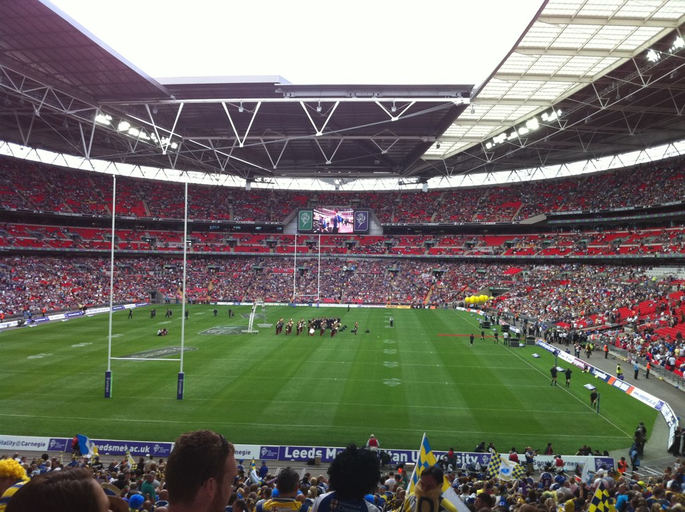
- First Round: 13th & 14th January 2024
- Second round: 27th & 28th January 2024
- Third round: 10th to 11th February 2024
- Fourth round: 24th & 25th February 2024
- Fifth round: 9th & 10th March 2024
- Sixth round: 22nd to 24th March 2024
- Quarter-finals: 13th & 14th April 2024
- Semi-finals: 18th & 19th May 2024
- Final: Saturday 8th June 2024, kick-off TBC
About The Challenge Cup Final
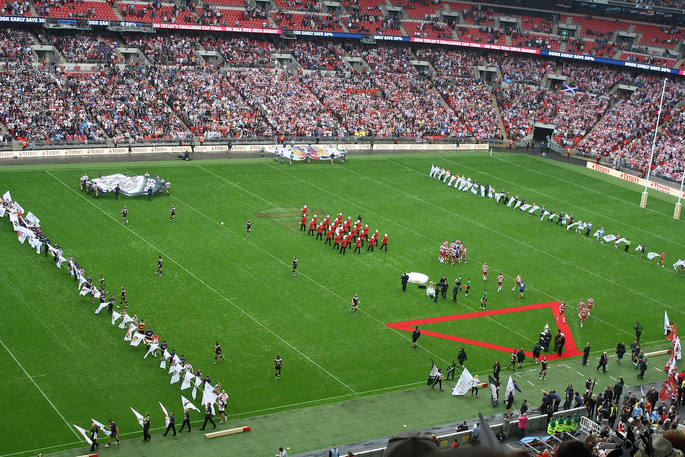
The Challenge Cup is one of the most important tournaments in rugby league, having taken place in one form or another since 1896. Organised by the Rugby Football League, it is open to professional, semi-professional and even amateur rugby clubs, with the final taking place at Wembley towards the beginning of June. In 2018, French side Catalans Dragons became the first non-English side to win it.
In order to understand the origins of the Challenge Cup you first need to know a little bit about the split between rugby union and rugby league. Though it’s more complicated than this, in essence it boiled down to the fact that rugby union’s chiefs were fiercely against the idea of the sport turning professional whilst rugby league clubs wanted to pay players to ensure the best possible performances. In 1895 the Northern Rugby Football Union broke away from the country’s Rugby Football Union in order to begin the administration of its own competition.
The reason that it is relevant to the formation of the Challenge Cup is that the Northern Rugby Football Union’s teams had initially been happily playing in knock-out competitions organised under the rules of the Rugby Football Union, but when the RFU refused to organise any sort of national competition for fear that the call to professionalise might grown, the split between the Northern alliance and the national organisation grew to the point of a separation.
Challenge Cup Formation & the Move to Wembley
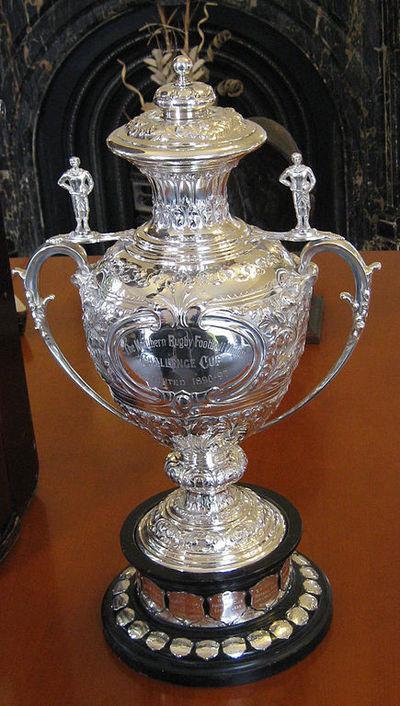
In the wake of the schism that occurred in English rugby in 1895, the northern teams were suddenly free to organise whatever competition they wanted away from the glare of the RFU. As a result they came up with the Northern Rugby Football Union Challenge Cup, commissioning the jewellery business Fattorini and Sons of Bradford to come up with a trophy, which cost £60. The newly formed competition proved to be immediately popular, with fifty-two teams signing up to play in it in its inaugural 1896-1897 season.
It also proved to be popular with rugby fans and just shy of thirteen and a half thousand people turned up to Headingley in Leeds to watch the first ever final, featuring Batley and St. Helens. Despite the latter’s future dominance of the competition, it was the former that ran out 10-3 winners and got to lift the inaugural cup, with the players receiving winners’ medals that were valued at thirty shillings. Its popularity grew year-on-year, though the Cup was suspended between 1916 and 1919 because of the war.
Given that the competition was set up by the Northern Rugby Football Union, it’s no major surprise that the final was usually held at the ground of one of the larger northern rugby clubs. Then, in 1928, Huddersfield Town Football Club made it to the final of the FA Cup, which was being played at the newly opened Wembley Stadium. The Terriers had played in the FA Cup final numerous times before, including winning it in 1922, but there was a buzz around the town at the idea of playing in Wembley Stadium that became impossible to ignore.
The result was that Huddersfield’s rugby team felt that the competition would benefit from being moved to Wembley, copying the FA Cup and seeing the game moved onto the national stage. The idea was put before the rugby league authorities and they voted 13-10 in favour of shifting the final to the nation’s capital, feeling that the larger ground would make it safer in terms of fitting in the number of supporters who wanted to watch the final. The first one to be held at Wembley featured Wigan and Dewsbury, with the former winning 13-2 in front of 41,500 people.
WWII and the Post-War Growth
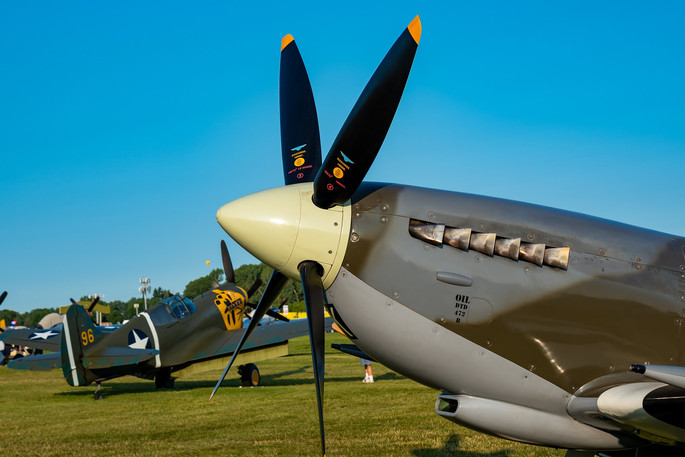
Whilst the interruptions for the First and Second World War were far from ideal, not least of all because there was a war raging across Europe, a decision was taken to continue playing games during the latter conflict, all be it on a smaller scale, in order to maintain morale. In the spirit of communal togetherness and celebrating achievements that had become part of British life during the war, the Lance Todd Trophy was created in 1946 and awarded to the Man Of The Match according to members of the Rugby League Writers’ Association that saw the game played live.
In the years that followed the war the Challenge Cup grew in importance, with the 1954 replay witnessing the biggest ever crowd for a Challenge Cup final when more than 100,000 people attended Odsal Stadium to see Halifax lose 8-4 to Warrington. The official number was 102,569, though in actual fact it is believed that as many as 120,000 people were actually in the ground that day.
Amateur Teams & The Dominance of the North

A number of amateur teams have taken part in the Challenge Cup, though prior to the 1993-1994 season this was typically limited to as few as two per campaign. Indeed, during the 1980s and part of the 1990s the competition was solely for professional clubs before a deal between the Rugby Football League and British Amateur Rugby League Association allowed a larger amount of amateur teams to begin taking part.
The deal was aimed at helping to bridge the gap between amateur and professional rugby league sides, which was also aided by the 1997 introduction of the Challenge Cup Plate for teams knocked out during the early rounds of the tournament.
The year before the Challenge Cup Plate was introduced, the competition suddenly became a pre-season one when rugby as a whole moved to become a summer season game. Perhaps that helps to explain why the previous dominance of northern sides began to be questioned, with London Broncos becoming the first team from south of the Watford gap to appear in the final of the tournament. Their appearance didn’t do a huge amount to aid the cause of rugby in the south, however, going on to lose by a record points margin of 52-16 to Leeds.
The Challenge Cup’s Format in 2024
The way that the Challenge Cup works has changed numerous times over the years, up to and including the competition being opened up to welcome amateur teams from 1993 onwards, though only professional teams took part in 2021. What follows is a look at the modern iteration of the competition, which boasts eight rounds before the final and teams entering at different stages thanks to the seeding process in play. Here’s a look at the different rounds of the tournament:
- Round 1: Twenty amateur teams from across the UK are invited to take part, with the vast majority being English and linked to the British Amateur Rugby League Association. Champions of rugby leagues in Scotland, Wales and Ireland have also been included at various points, as have teams representing the police and the three branches of the armed forces, whilst teams from outside the UK have been invited from time to time and student teams have also taken part at this stage
- Round 2: Ten winners from round 1 are joined by ten teams from the National Conference League Premier Division
- Round 3: Round 2 winners are joined by all Championship and League 1 clubs with the exception of Toulouse
- Round 4: Sixteen winners from round three are paired together
- Round 5: Eight victors from round 4 compete in order to whittle down the field of round 6 entrants even further
- Round 6: The remaining four teams are joined by the twelve Super League sides
- Quarter-Finals: There are no more additions to the competition, with the eight teams remaining from the sixteen that played each other in round 6 entering the quarter-finals
- Semi-Finals: The four winning teams from the quarter-finals go up against each other for a place in the final
- Final: The best two teams that are remaining in the competition go head-to-head in the final, which is currently held in early June (August Bank Holiday prior to 2020)
Challenge Cup Final Venues
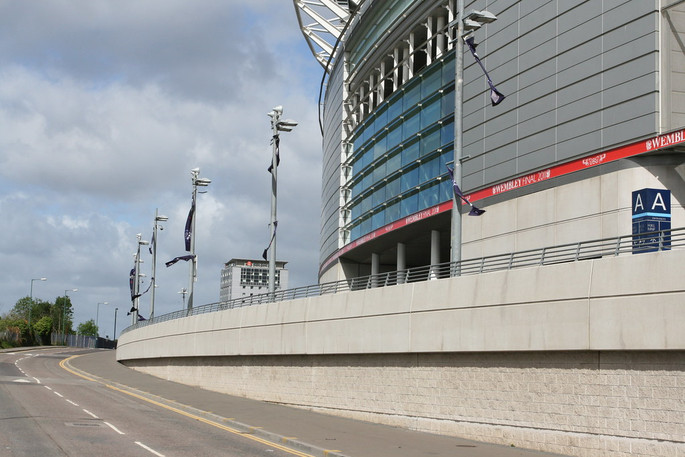
The draw dictates where the games in the Challenge Cup are played from the first round through to the quarter-finals. The team drawn as the home side will host the matches all the way through to the semi-final stage.
Once the Challenge Cup reaches the semi-finals the matches are played at neutral venues, essentially so that there is no home advantage. The final is hosted by Wembley Stadium, though finals have been played elsewhere. This was especially true when Wembley was knocked down and rebuilt during the 2000s. The 2022 final was held at the Tottenham Hotspur Stadium.
The Challenge Cup Trophy & Other Awards
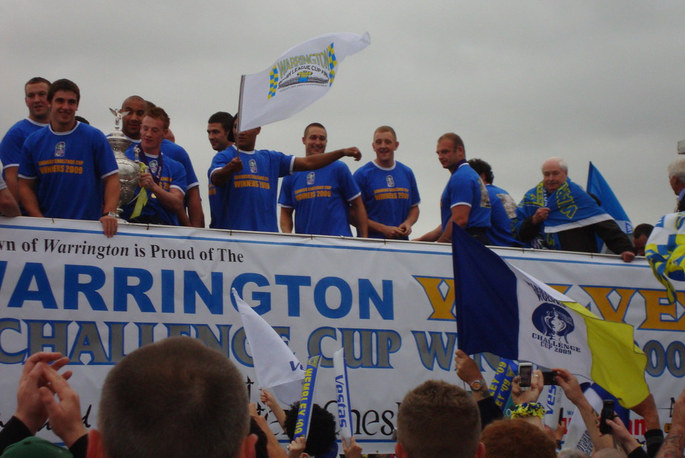
The Challenge Trophy awarded to the winning side is based on the one that was created by Bradford’s Fattorini & Sons, who as silversmiths were given £60 and told to create ‘something prestigious’. The original trophy was thirty-six inches tall and made out of solid silver, standing on top of an ebony base.
That trophy was taken out of commission after the 2001 final because the silver was wearing thin, players that stood on the handles had become damaged and the flute top had gone missing. A goldsmith named Jack Spencer created the trophy used today, which is an almost exact replica of the original one created by Fattorini & Sons.
Indeed, one of the only differences between the modern trophy and the original is that the shields on the modern trophy, which are put on to represent the winners, are all the same size. As space began to run out on the original trophy the shields began to get smaller and smaller.
The Man Of The Match as adjudged by members of the Rugby League Writers’ Association who were actually in attendance at the game is known as the Lance Todd Trophy. Lance Todd himself was a Kiwi-born player who was killed in a road accident in the Second World War. It is presented during a celebratory dinner at the AJ Bell Stadium.
The trophy belongs to the Red Devils Association, which is an association that represents former Salford Red Devils players. Sean Long is the person who has won the trophy more times than any other, picking up his third in 2006. The most that anyone else has won it is twice, with a number of players achieving that.
Interesting Facts
Having been in existence since 1896, it goes without saying that the Challenge Cup has enjoyed numerous interesting moments over the years. From a list of broadcasters including some from as far away as Brazil and Russia through to Wigan Warriors being the competition’s most successful team, there are many fun facts surrounding the Challenge Cup. Here’s a look at some of the best:
- Syd Hynes was the first player to be sent off in a final
- The quickest try at a final was scored after 35 seconds in 1972
- The first hat-trick of tries was scored by Robbie Paul in 1996
- Tom Briscoe’s five tries in the 2015 final remains the most scored by one player in a final
- The Challenge Cup was sponsored for the first time in 1980 and has enjoyed many different sponsors since then
- The Lance Todd Trophy was first presented to Wakefield Trinity’s William “Billy” Stott in 1946
- If the Challenge Cup Trophy is transported anywhere by car then two people must be in the car, whilst if it’s out of the locked cabinet it should be kept in then someone must sleep in the same room as it
- Wigan Warriors were the first team to be presented with the ‘new’ version of the Cup in 2002
